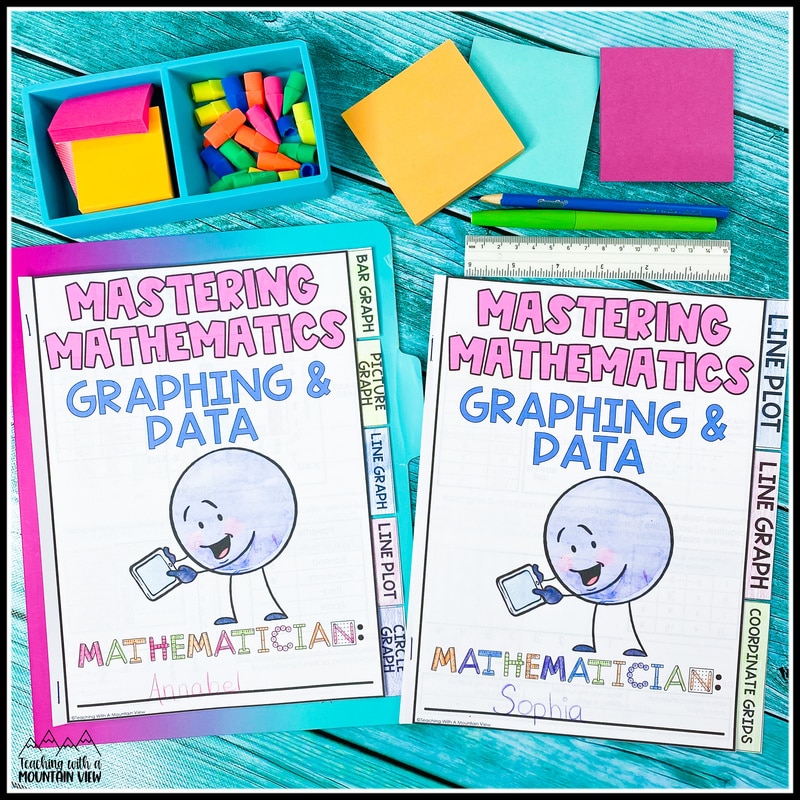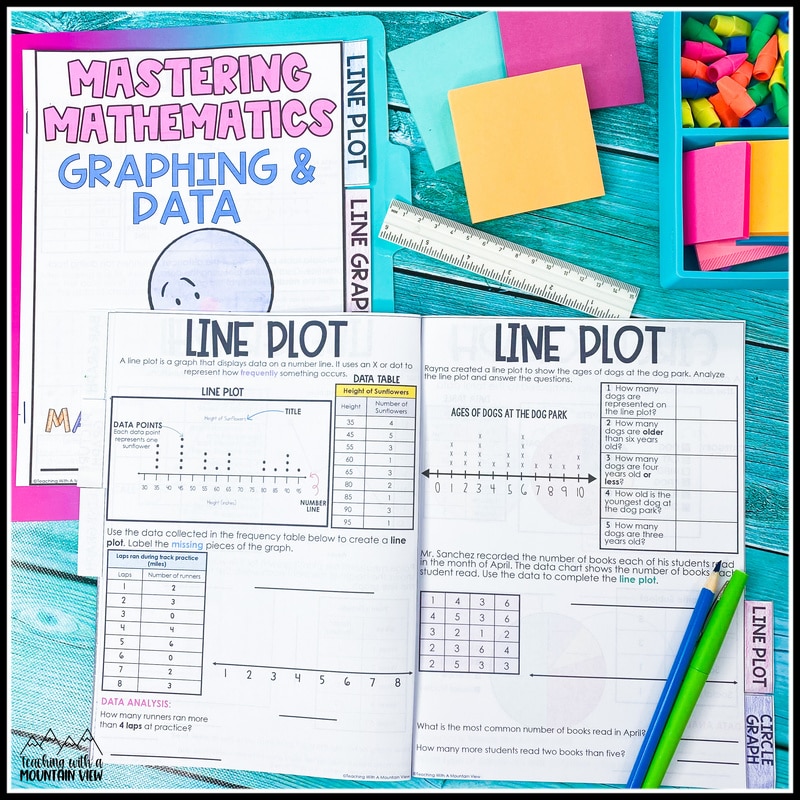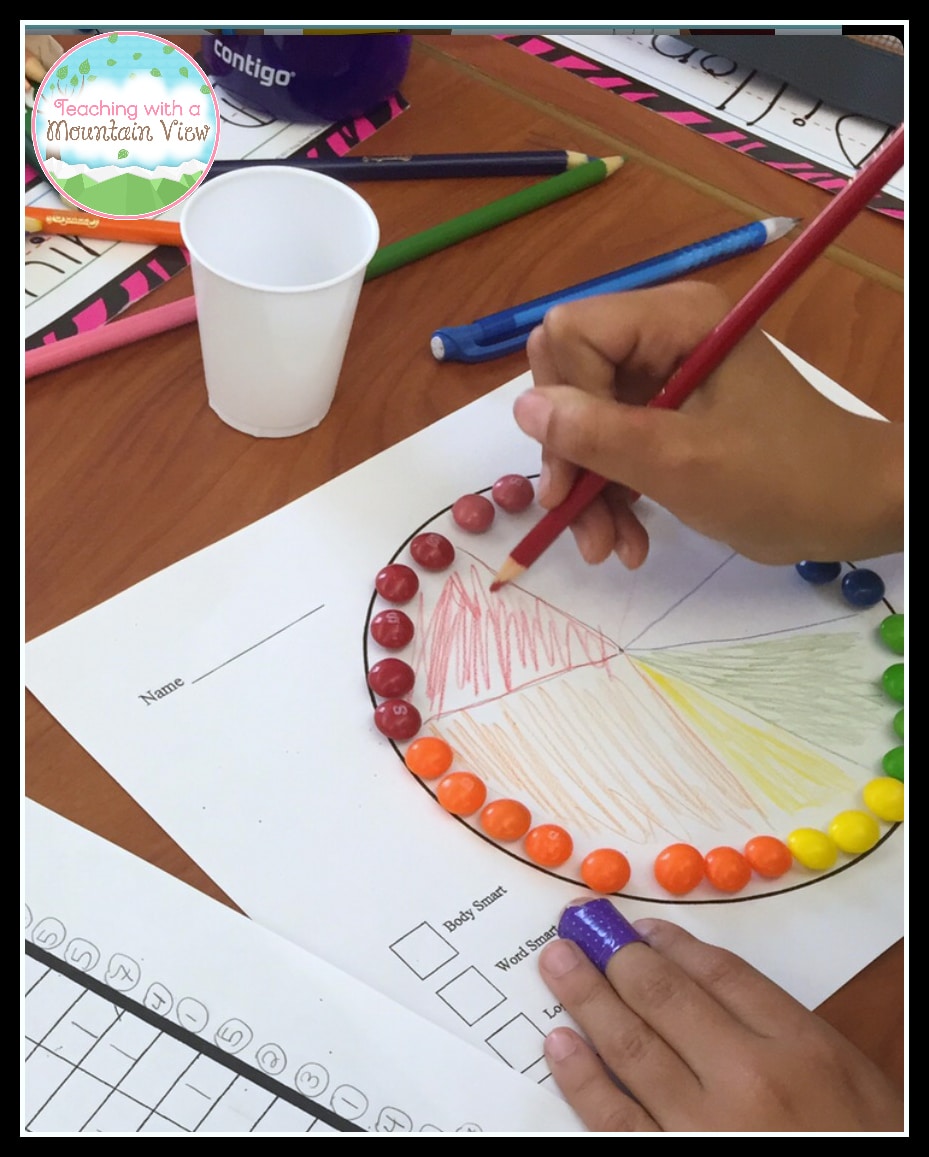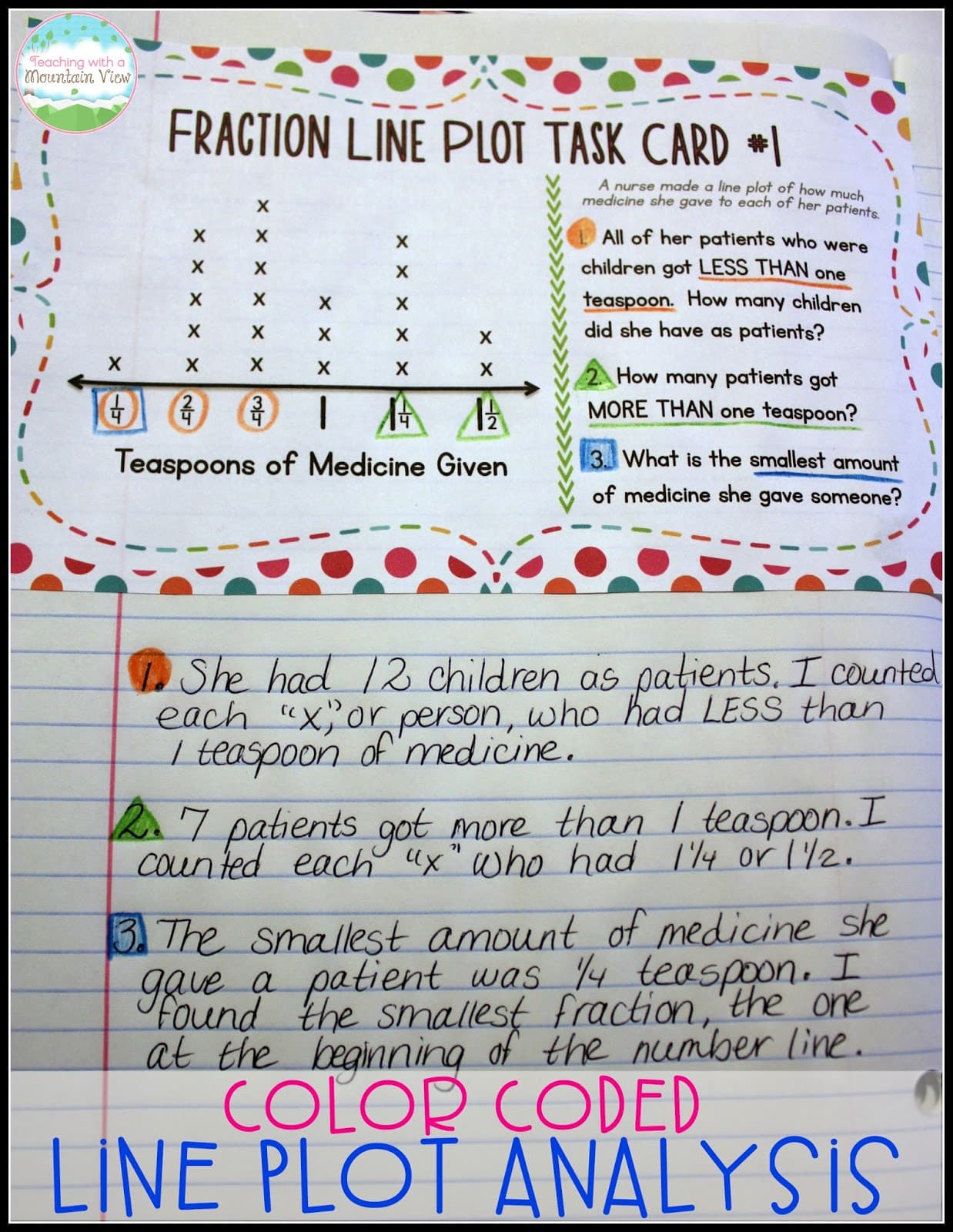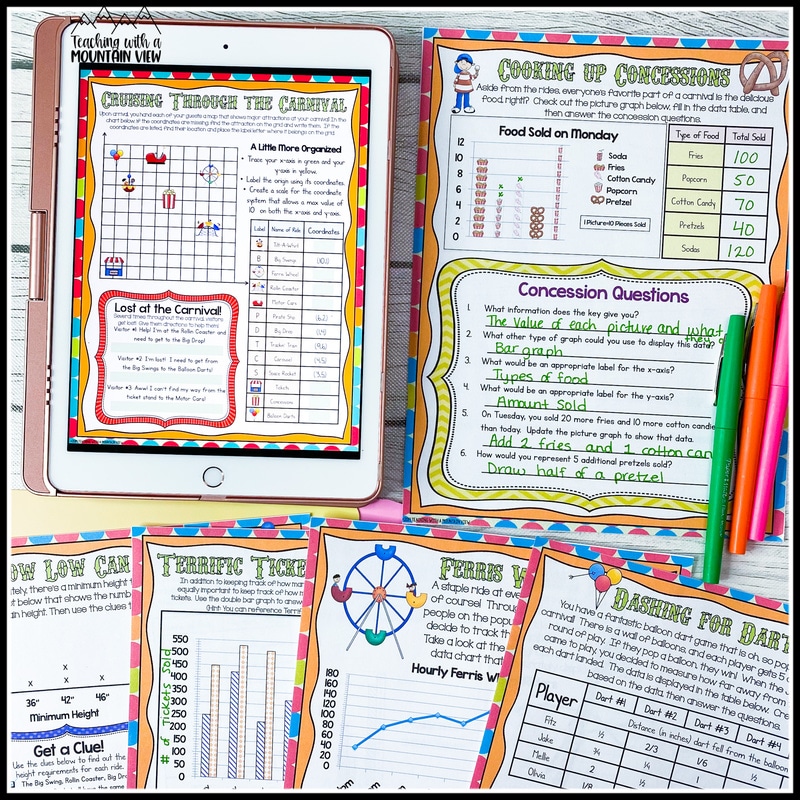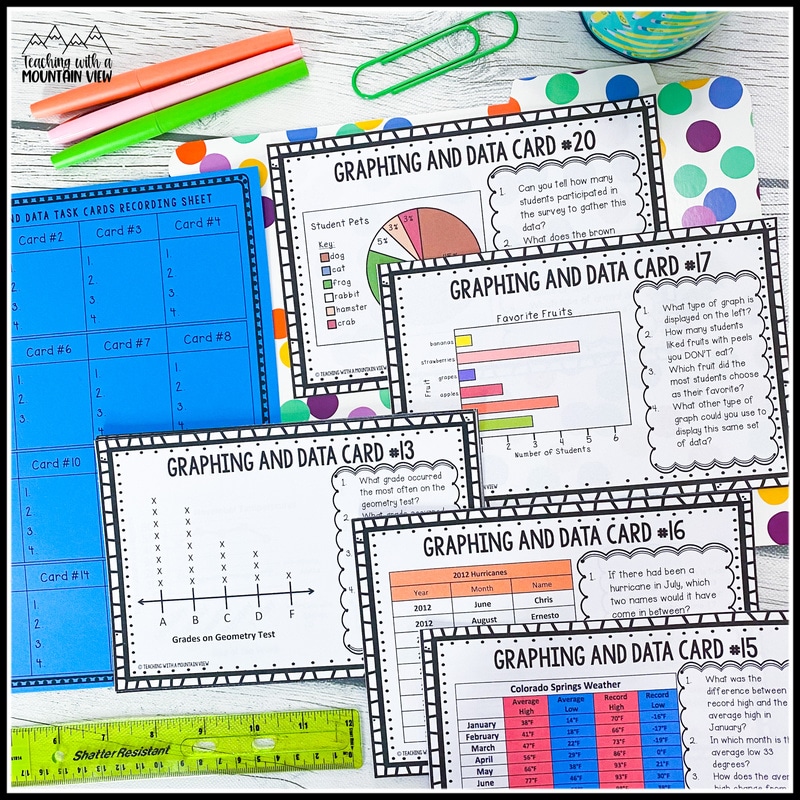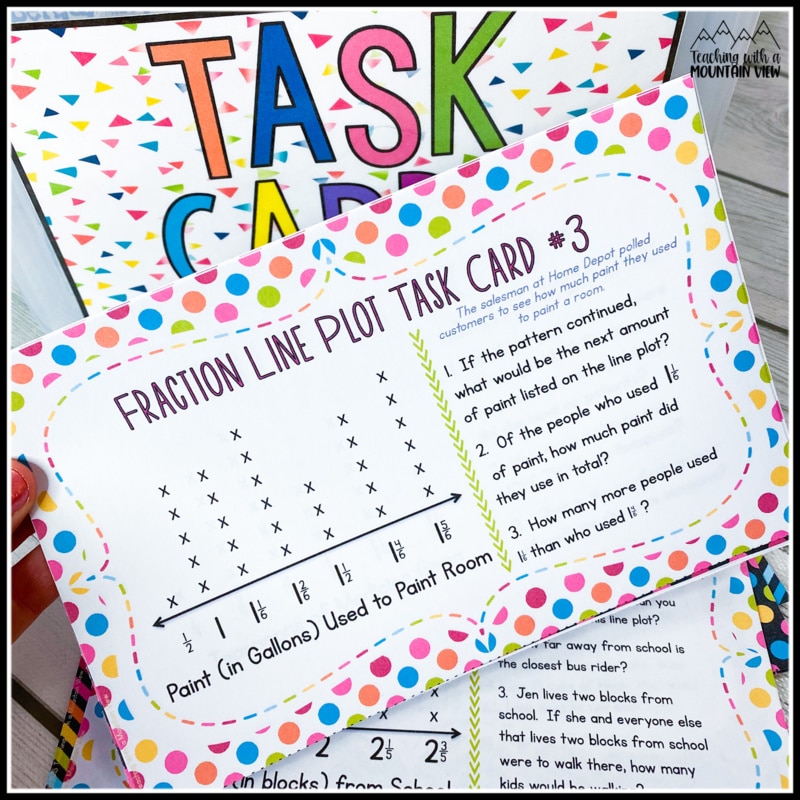Teaching Data and Graphing
By Mary Montero
Share This Post:
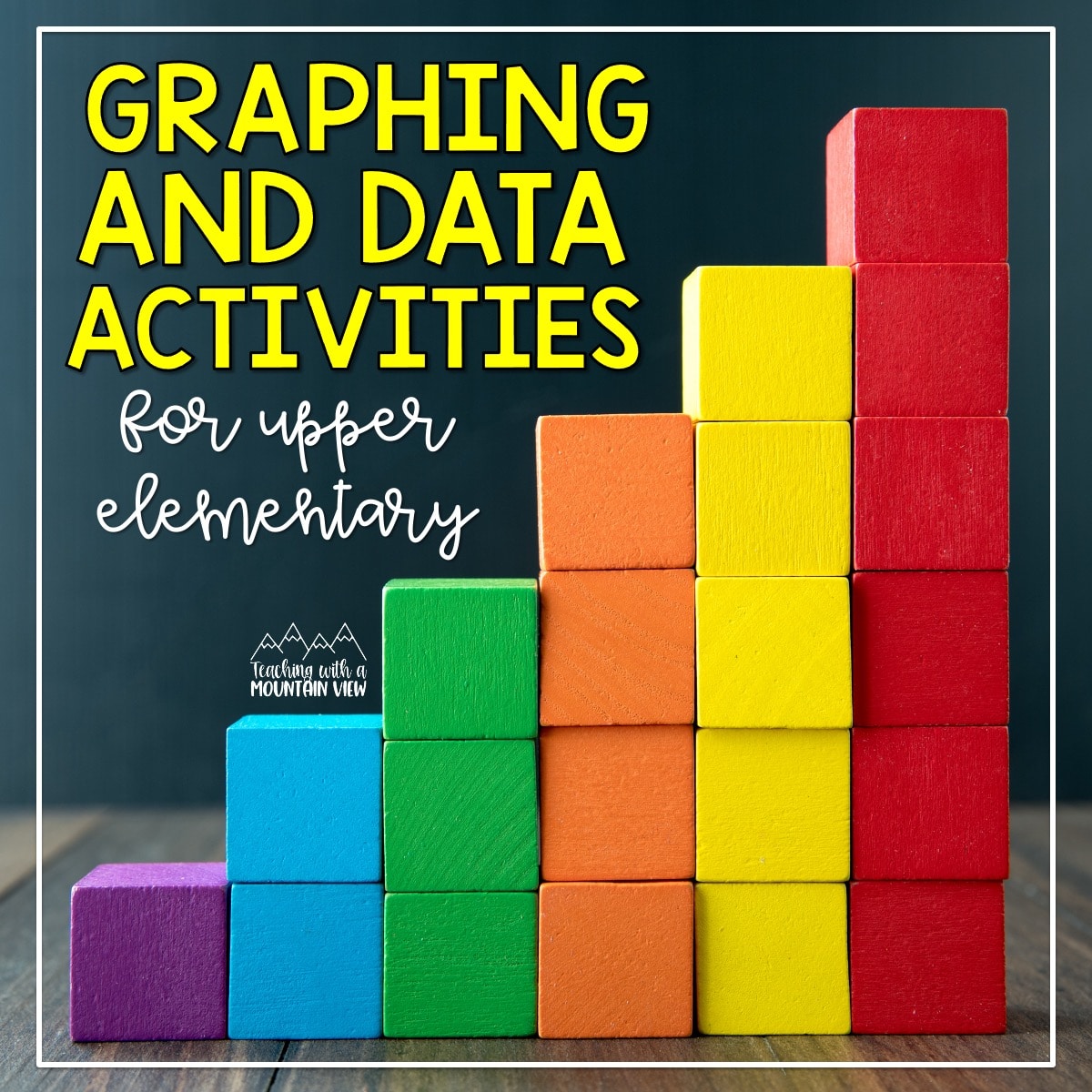
Teaching students to interpret data and graphs is an important upper elementary skill. Data is all around us and being able to display and interpret it is a critical skill! Students encounter graphs not only in math class, but also in science and reading too (oh hey, text features!). When students understand how graphs work, they unlock a quick way to understand and interpret data.
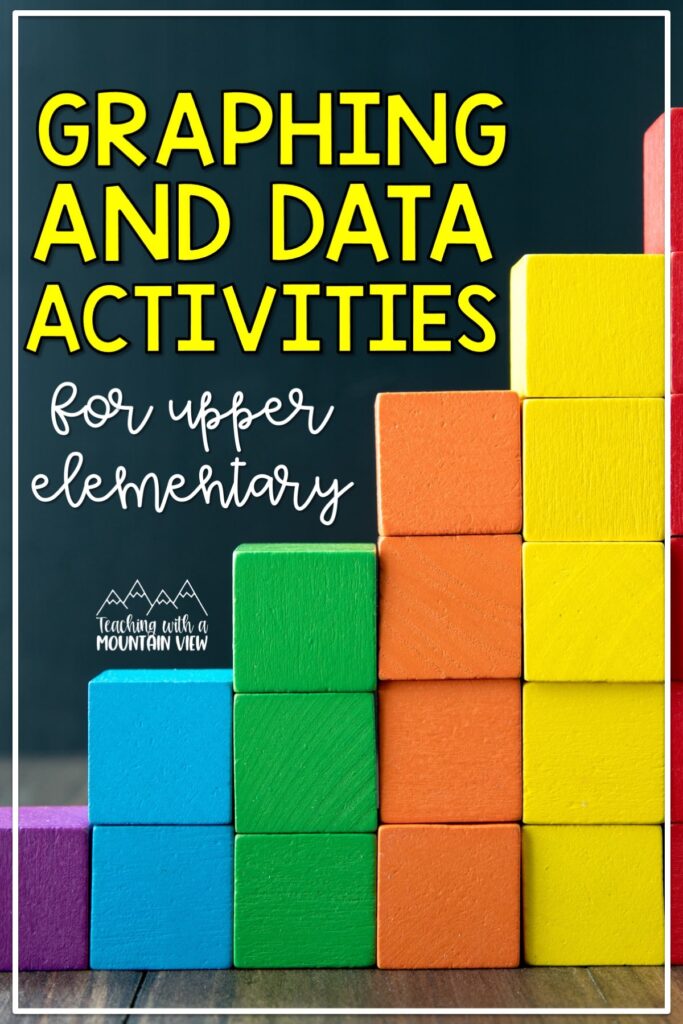
When working with data and graphing in upper elementary, we cover these key graphs. It’s important for students not just to recognize the graph, but also to understand the purpose of each one.
- Bar Graph: conveys relational information quickly to make comparisons in quantity
- Picture Graph: similar to bar graph, but uses pictures or symbols to display data
- Line Graph: track changes over time
- Circle Graph: show percents of a whole
- Line Plot: shows frequency on a number line
Data and Graphing Anchor Chart and Intro Lesson
We start our lesson out with a super basic inquiry. I give them a small pile of colored blocks, cm cubes, or unifix cubes. I ask them to organize them in some way. Sometimes I have to ask them to find another way a few times, but iInevitably, they always end up forming a bar graph with them, both horizontally and vertically.
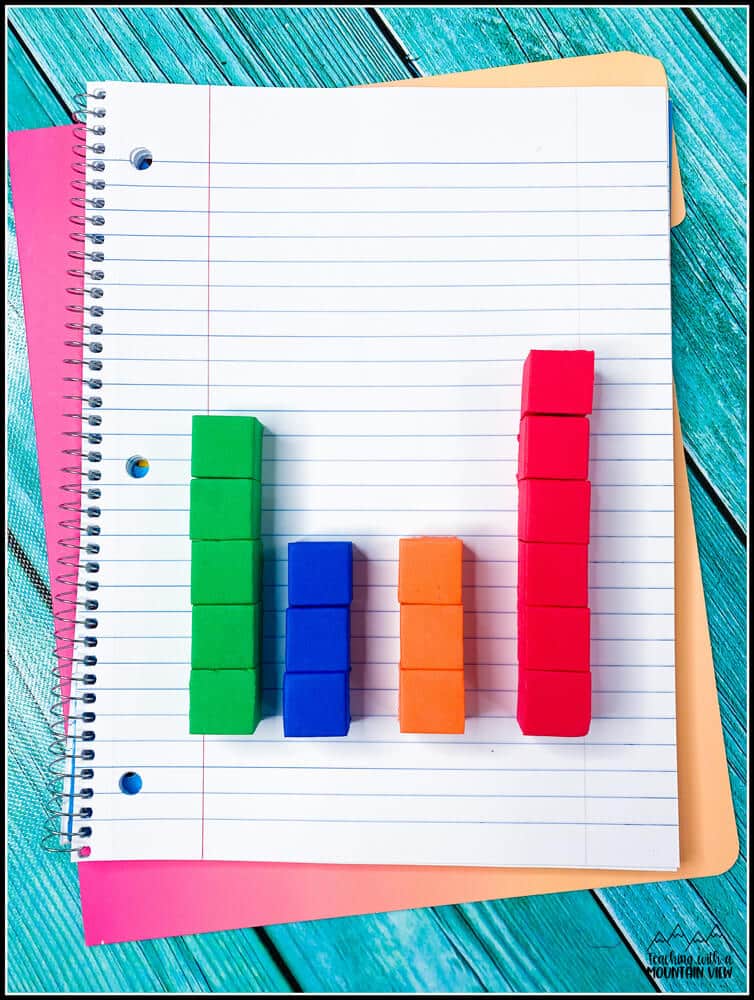
Then, I move on to showing students a set of unorganized data. It’s usually a table with a bunch of different “favorites” listed out in random orders. For this particular lesson, we did favorite wheeled toy. So that table had “bike” “scooter” and “skateboard” listed a bunch of times, totally randomly, in the table. They represent votes from a classroom of students, but in no particular order.
I ask them to tell me what it all means. They usually come up with some very creative answers that EVENTUALLY lead up to the idea that it’s better to organize our data in a way that makes it easier to understand. At that point, we chat about data tables and how they help us organize our information That’s the first step we take when creating our graphing and data anchor chart.
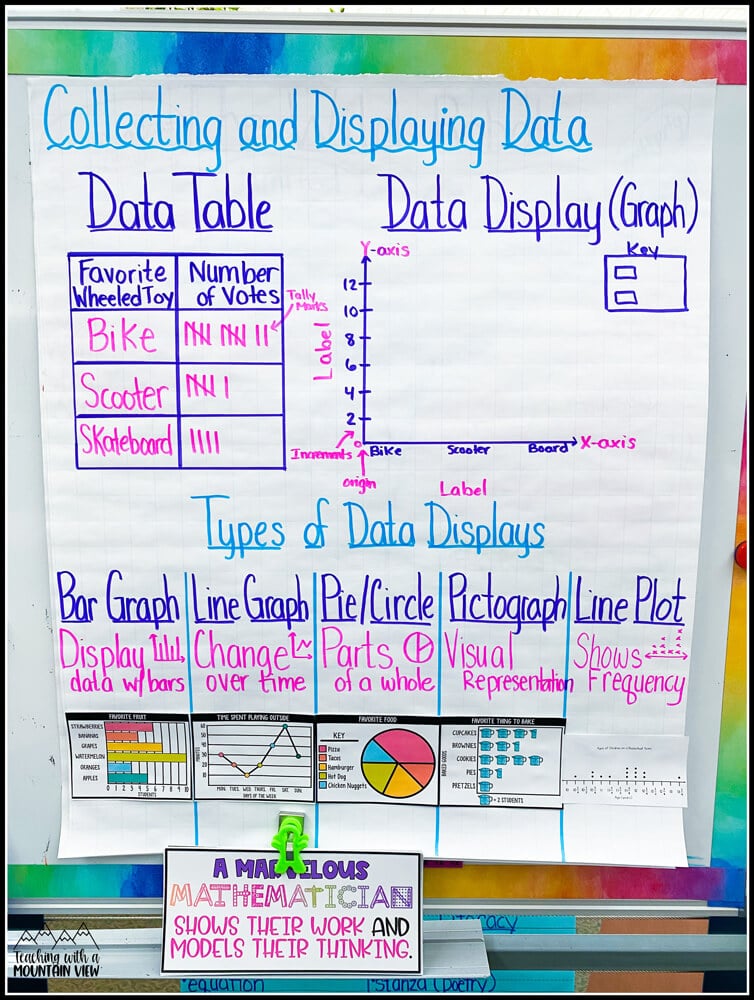
This leads to the creation of our first data table.
After we’ve made our data table based on the information in the original table, we chat about ways we can visually display the same data. Most students are familiar with bar graphs, so that’s where we start. We brainstorm the different parts of a graph (labeled in pink on the anchor chart). You can fill in the chart or use sticky notes to represent the bars as well.
After we’ve done this, we talk about different ways that data is displayed. We chat about a line graph and why that isn’t the best display for this set of data. That leads them to an understanding of WHY we use line graphs (to show change over time). We also hit on Pie graphs, pictographs, and line plots, all of which would work to display this data as well.
Graphing and Data Flip Book
To save on time, we have started using my new-ish math flipbooks as a replacement for interactive notebooks (although we still use those sometimes, too!). I designed these flipbooks so that students are learning about the concept on the left hand side and doing some guided exploration, and the right side gives them an opportunity to complete tasks on their own. I use this as an introduction lesson each day that we focus on the different types of graphs. You can also use the left side as a teaching guide and the right side as independent work or homework practice!
Key Topics When Teaching Data and Graphing
- I always emphasize preciseness when they are working with graphs. That means using a ruler and taking care to draw a neat X and Y axis.
- Keep bar graph widths and spacing between bars consistent
- Pay close attention to spacing between increments. I prefer graph paper for the first few graphs for this very reason.
- Emphasize all the parts of the graph. Titles, labels, keys, etc.
- Be sure to always include units, as needed.
- Chat about the different ways similar graphs can look. For example, a line graph or bar graph might have multiple lines to show different sets of data to compare. A bar graph might be displayed horizontally or vertically, etc.
Graphing Practice Ideas for Types of Graphs
We make several different graphs during our unit to show students the variety of ways to display data, and learn which types of graphics work best for each data set. Here are some of my favorites activities for each type of graph.
Bar Graphs and Picture Graphs: Track actual classroom or school data throughout your unit. Graphing chapters read by each class in the grade level is a fun way to have a friendly literacy competition while also brushing up on math skills. Use sticky notes to create graphs in notebooks with one sticky note representing between 1-5 students. These are also great for creating large anchor chart sized graphs!
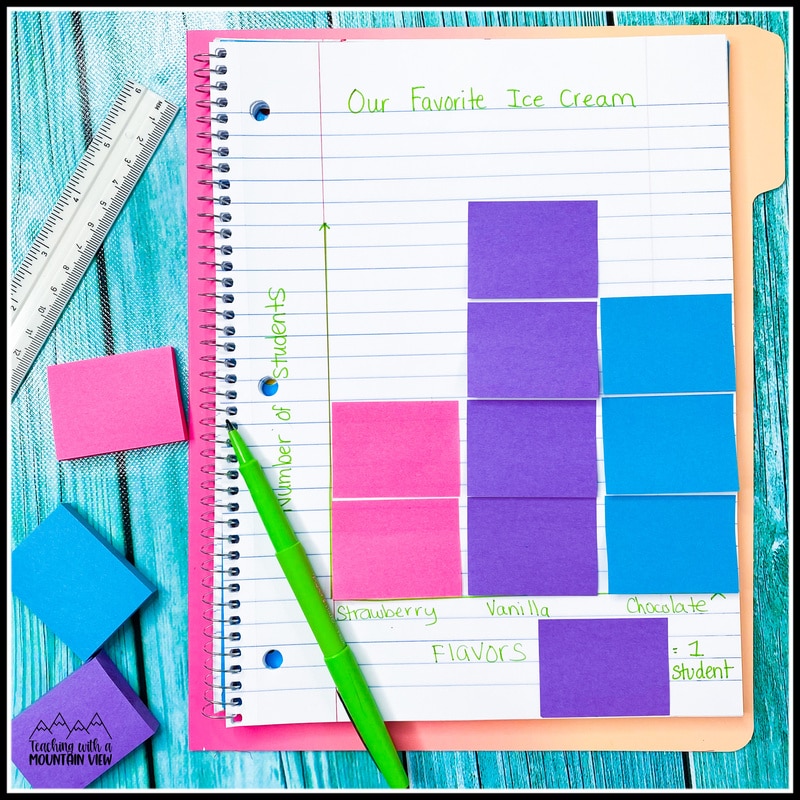
Line Graphs: Dreaming of warmer (or colder!) weather? Appoint a different meteorologist each day to report the current temperature in two different cities. All students then plot those temperatures on individual graphs.
I have also done it before where I print out the average highs and lows for our city and have students create and evaluate a double line graph. I already have this done for Colorado Springs, so you are welcome to use these data tables to create your line graphs if you’d like! One shows just the average highs and lows for each month. The other has a lot of extra information, like average and record highs and lows and average precipitation, which is great for enrichment and differentiation. Ask students how they could use and display the extra info!
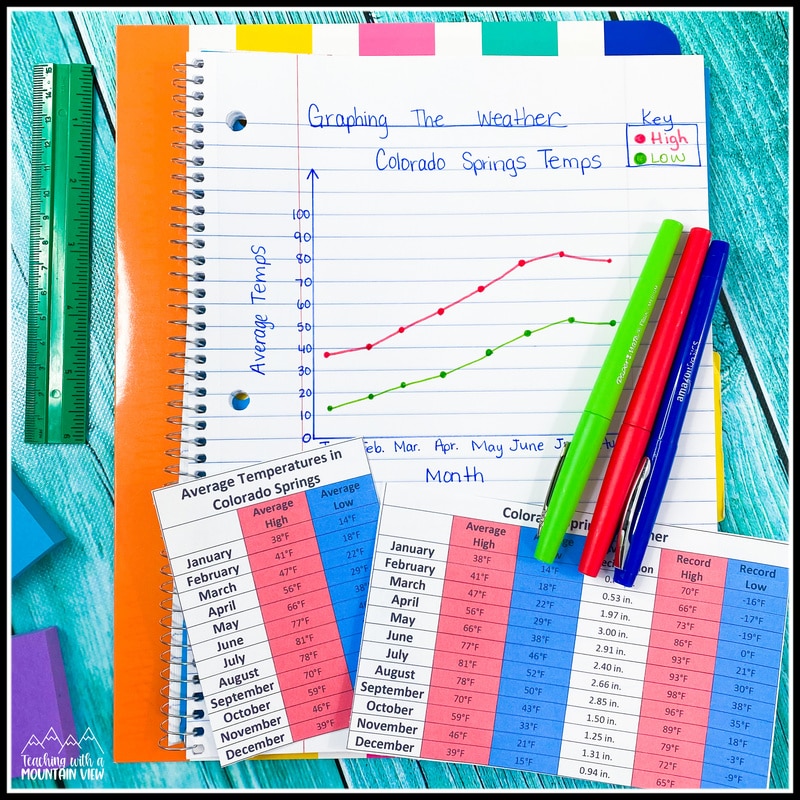
Circle Graphs: These are perfect for representing the interests of students. Display favorite genres, sports, fruits, etc. in easy-to-read visuals. I also like to include some fraction and percentage work in these lessons as well. My favorite circle/pie graph lesson? USE SKITTLES! It’s seriously so insanely fun and makes it so visual for students to see since they are all the same size. I LOVE this lesson, and you can read more about creating circle graphs with Skittles on this blog post.
Line Plots: The number of letters in first names or months of birthdays provide great datasets for line plots. I have an entire blog post about line plots that you can see for more ideas.
Picture Graphs: Oh, these are the best! You can use stickers, mini erasers, and computer programs to make these. They are always a student favorite! I always buy emoji stickers (Amazon affiliate link) and let students vote on their favorite emoji. Then we create a pictograph with the stickers. They LOVE it!
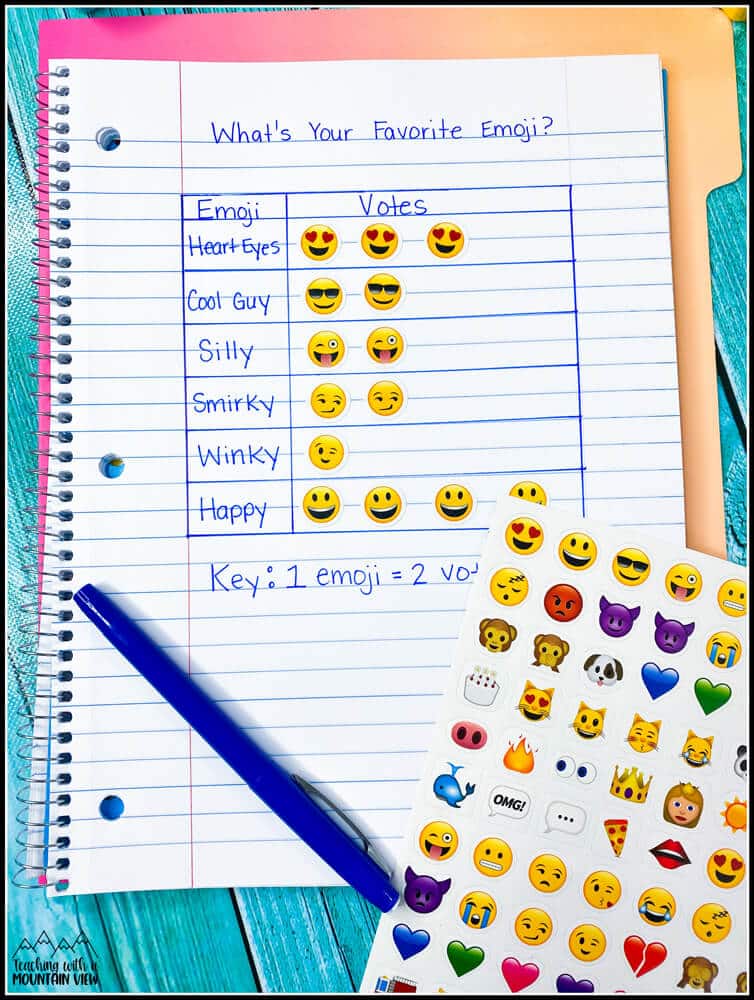
Other Data and Graphing Activities
This carnival-themed graphing and data math project requires students to interpret data tables and graphs, as well as create their own data tables and graphs. It also includes tasks and questions about each graph. PLUS the pages stand alone, so you can use a few of the pages or all of them depending on how much time you have and the skills your students are ready to review. This makes it the perfect project for differentiation. In fact, I have one of my enrichment groups working on this set as an alternative as we speak, and they are LOVING it.
Collect Real Data: The buy-in on this one is AMAZING! Set up stations to collect and plot data (longest jump, length of current pencil to nearest cm, head circumference, etc.) Be sure you have students create questions about and observations for the data.
Task Cards: You know how much I love task cards! This graphing and data bundle will cover your entire unit. I address so many different types of graphs with this set!
Free Quiz: This activity is perfect as a simple assessment before a graphing and data unit to see what students already know, or as a summative assessment after your unit is complete. I’ve also used it as a fun review activity at the end of our unit OR as homework, if you choose to send home homework.
More Graphing and Data Resources
Working on other graphing and data skills? Here are ideas for teaching coordinate grids, including a fun free activity! This post can also help with patterns and coordinate graphing.
Mary Montero
I’m so glad you are here. I’m a current gifted and talented teacher in a small town in Colorado, and I’ve been in education since 2009. My passion (other than my family and cookies) is for making teachers’ lives easier and classrooms more engaging.







